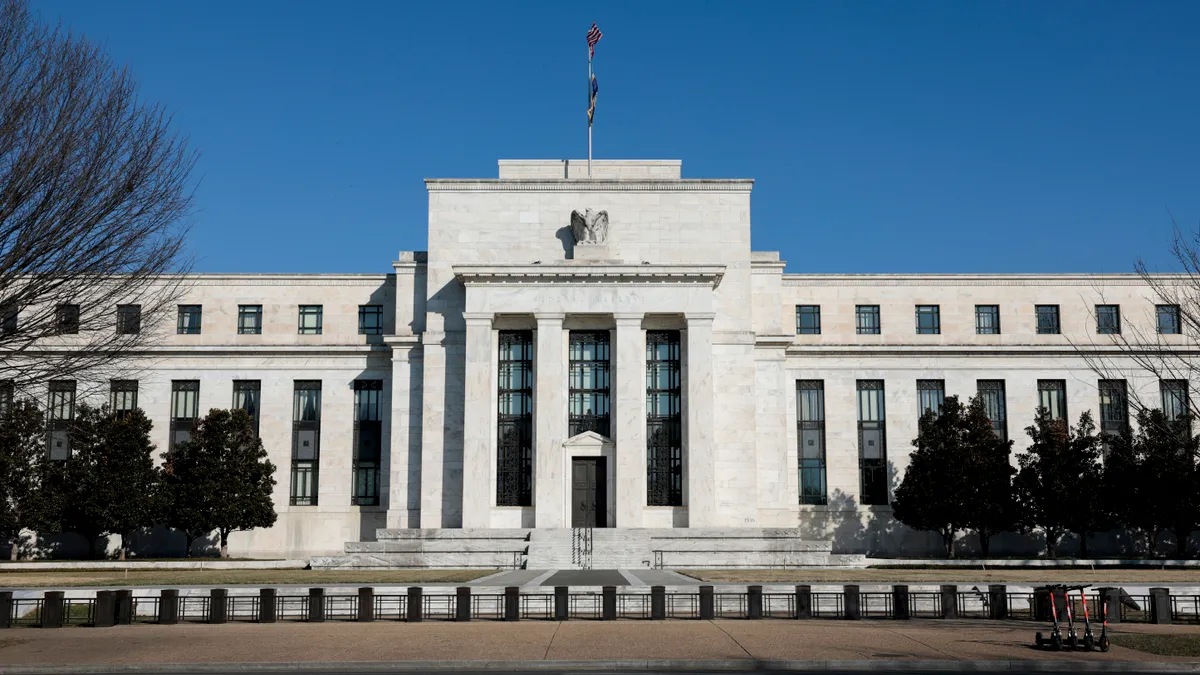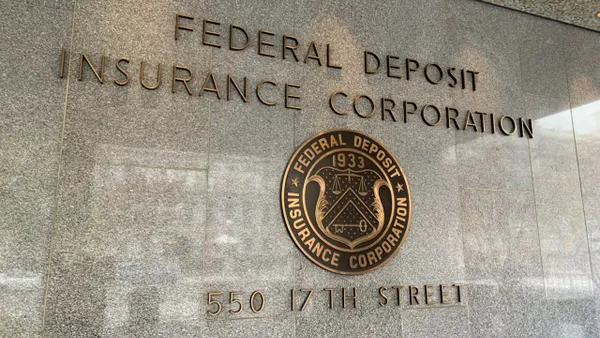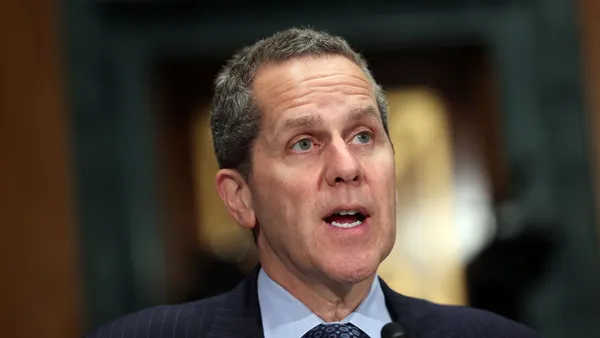Dive Brief:
- Banks during the third quarter tightened credit standards for all types of loans and for all sizes of companies, prolonging a trend that preceded turmoil in the banking system in March, the Federal Reserve said Monday. Demand for loans fell.
- In commercial and industrial lending, “tightening was most widely reported for premiums charged on riskier loans, spreads of loan rates over the cost of funds and costs of credit lines, while significant or moderate net shares of banks reported tightening all other terms on C&I loans to firms of all sizes,” the central bank said, describing results of its quarterly Senior Loan Officer Opinion Survey.
- Banks, when describing reasons for hardening loan standards, most frequently cited a murky economic outlook, reduced tolerance for risk, declining loan credit quality, concerns about funding costs and falling values of customer collateral, the Fed said. Banks also noted concerns about deposit outflows, shifts in their liquidity and risks from legislation, supervision or accounting standards.
Dive Insight:
Banks have tightened lending standards as the Fed, starting in March 2022, pushed up the benchmark interest rate from near zero to a range between 5.25% and 5.5% — a 22-year high — in the most rapid pullback in accommodation in 40 years.
Policymakers, aiming to cut inflation to their 2% target, kept the federal funds rate unchanged last week while flagging the possibility of an additional rate hike.
“It’s fair to say that the question we’re asking is, ‘Should we hike more?’” Fed Chair Jerome Powell said during a press conference Wednesday. “We’re very focused on getting confident that we have achieved a stance of monetary policy that is sufficiently restrictive — that’s really our focus.”
In response to hawkish monetary policy, financial institutions in the U.S. and elsewhere are unlikely to loosen credit anytime soon, according to Moody’s Investors Service.
“Central banks will keep rates higher for longer to keep a lid on core inflation, which will gradually increase borrowing costs, slow economies and uncover pockets of risk,” Moody’s said.
In late September, Fed officials forecast one more quarter-percentage-point increase in the main interest rate this year.
Since then, the bond market has reinforced the Fed’s inflation fight, with the yield on the 10-year Treasury note rising about 0.4 percentage points to 4.7%. The yield is the benchmark for corporate bonds, mortgages and other financing.
Although price pressures have eased this year, Moody’s said, “the inflationary shock will eventually catch up with consumers and companies; combined with higher rates, this will weaken asset quality — liquidity will also tighten.”
U.S. regulators next year will probably tighten the screws on financial firms, Moody’s said, noting that bank supervisors in 2023 have already announced proposals requiring banks to hold billions of dollars more in capital to reduce risk.
“Financial sector regulation will tighten in 2024, driven by stress in parts of the banking sector earlier this year and warnings from regulators about risks in market-based finance,” Moody’s said.
Indeed, the Financial Stability Oversight Council flagged risks in commercial real estate markets after a meeting Friday.
“Conditions in CRE markets remain challenging following declines in CRE prices and an increase in the cost of financing,” according to the council, which includes top federal and state financial regulators.
Banks tightened standards for all categories of CRE loans during the third quarter while reporting weaker demand from borrowers, the Fed said Monday.
Banks with assets below $100 billion, when detailing reasons for tighter lending, “more frequently cited concerns about deposit outflows, funding costs, deterioration in or desire to improve their liquidity positions and concerns about declines in the market value of fixed-income assets,” the Fed said.
The central bank surveyed 62 domestic banks and 19 U.S. branches and agencies of foreign banks between Sept. 25 and Oct. 5.












